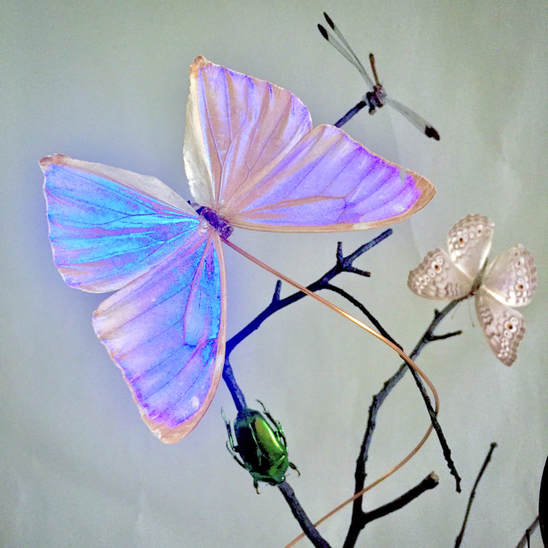Principles of Iridescence After quite a few years working with butterflies, I am still totally awe-struck at the crazily blue wings of the genus morpho. There is a simple (yet complex) reason why they are the blue they are – the colour is not down to pigment but to something else completely: ‘structural colour.’
Structural colouration was first observed by English scientists Robert Hooke and Isaac Newton in the 17th century, and its principle – wave interference – explained by Thomas Young a century later. Young described iridescence as the result of interference between reflections from two or more surfaces of thin films, combined with refraction as light enters and leaves such films. The geometry then determines that at certain angles, the light reflected from both surfaces interferes constructively, while at other angles, the light interferes destructively. Different colours therefore appear at different angles. Structural coloration is caused by interference effects rather than by pigments. Colours are produced when a material is scored with fine parallel lines, formed of one or more parallel thin layers, or otherwise composed of microstructures on the scale of the colour's wavelength; and so the combined action of interference and diffraction is essential for the structural colour of the Morpho butterfly. This photo of a morpho didius from my own collection is over a century old. It shows how perhaps structural colour weathers the rigours of time in a very different way to pigmented specimens… and I marvel at the glory of this blue 105 years later. |

 RSS Feed
RSS Feed
